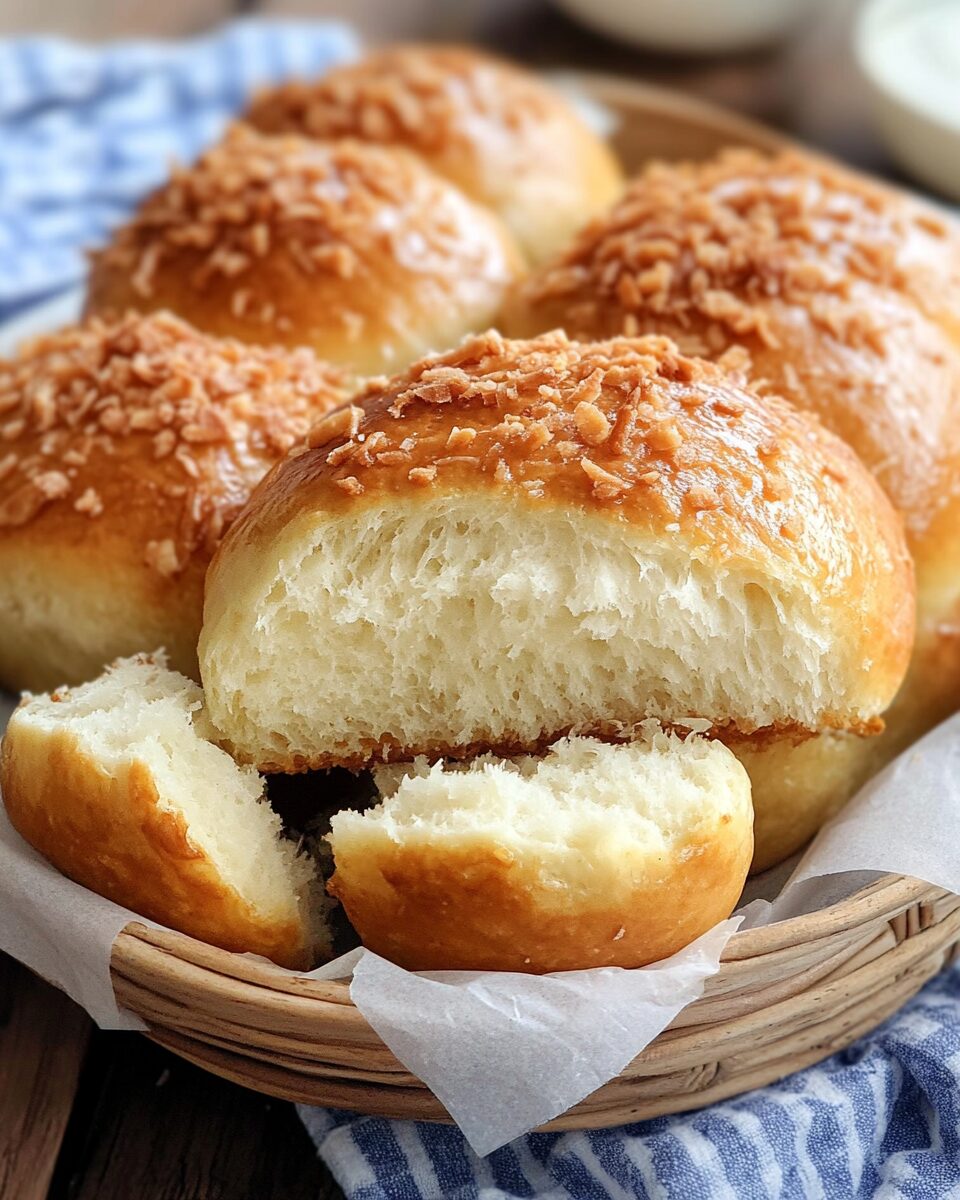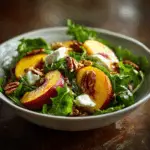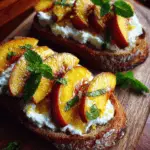Pan de Coco is a sweet, soft bread filled with rich coconut filling—a beloved treat in many Latin American and Filipino households. This coconut bread is perfect for breakfast, snacks, or dessert, offering a delightful combination of fluffy dough and creamy, sweet coconut.
FULL RECIPE
Ingredients
- 3 cups all-purpose flour
- 1 packet (2¼ tsp) active dry yeast
- ¾ cup warm milk (110°F)
- ¼ cup granulated sugar
- ¼ cup unsalted butter, melted
- 1 large egg
- ½ tsp salt
1.For the Coconut Filling
- 1 cup grated sweetened coconut
- ½ cup brown sugar
- ¼ cup coconut milk
- 1 tbsp butter
2.For Brushing
- 1 egg yolk mixed with 1 tbsp milk (egg wash)
Directions
- In a small bowl, dissolve yeast in warm milk and let sit for 5–10 minutes until frothy.
- In a large bowl, combine flour, sugar, and salt. Add the yeast mixture, melted butter, and egg.
- Mix until a soft dough forms, then knead on a floured surface for about 8–10 minutes until smooth and elastic.
- Place dough in a greased bowl, cover, and let rise for 1 hour or until doubled in size.
- While the dough rises, prepare the filling by combining grated coconut, brown sugar, coconut milk, and butter in a saucepan. Cook over low heat until thickened, then cool.
- Punch down the risen dough and divide into 10–12 equal pieces.
- Flatten each piece, place a spoonful of coconut filling in the center, and pinch to seal.
- Place filled dough balls seam-side down on a greased or parchment-lined baking sheet.
- Cover and let rise again for 30 minutes.
- Preheat oven to 350°F (175°C). Brush tops with egg wash.
- Bake for 20–25 minutes or until golden brown.
- Let cool slightly before serving.
Nutritional Information
- Calories: 230
- Carbohydrates: 33g
- Protein: 4g
- Fat: 9g
- Saturated Fat: 5g
- Fiber: 1g
- Sugar: 13g
- Sodium: 120mg
Cultural Significance of Pan de Coco
Pan de Coco is a traditional bread that has its roots deeply embedded in the culinary practices of several Latin American and Filipino communities. This delightful coconut-filled bread is often associated with celebrations, family gatherings, and everyday moments of joy. It carries a deep cultural significance as it reflects the rich history of coconut farming in tropical regions, where the ingredient is abundant and forms the base of many regional dishes. Its sweet, comforting flavors resonate with people of all ages, and it holds a special place in the hearts of those who enjoy it.
The Role of Coconut in Pan de Coco
Coconut is a key ingredient in Pan de Coco, and it brings a unique tropical flavor to the bread. Its versatility has made it an essential component in various cuisines, especially in the Caribbean, Southeast Asia, and parts of South America. The use of grated coconut in the filling creates a deliciously chewy texture that contrasts perfectly with the soft, fluffy bread. The coconut’s natural sweetness also provides a mild, yet rich flavor, which enhances the overall appeal of the bread.
Traditional vs. Modern Variations of Pan de Coco
While the traditional Pan de Coco recipe is simple and straightforward, modern variations of the bread have emerged over the years. Some bakers add additional flavorings to the dough, such as vanilla or cinnamon, to create a more complex taste. Others experiment with different types of fillings, such as chocolate or fruit jams, to give the bread a contemporary twist. Despite these variations, the classic coconut filling remains the heart of the recipe.
Baking Techniques for Perfect Pan de Coco
To bake a perfect Pan de Coco, mastering the dough is key. The dough needs to be soft, smooth, and elastic to ensure the bread rises well and bakes evenly. Kneading the dough for the right amount of time is essential for developing gluten, which gives the bread its structure. Additionally, letting the dough rise properly is crucial; it allows the yeast to activate, giving the bread its airy texture. The final step, baking at the right temperature, ensures a golden-brown crust and soft interior.
The Importance of Yeast in the Recipe
Yeast is a fundamental ingredient in Pan de Coco, as it helps the dough rise and gives the bread its soft, airy texture. The yeast fermentation process is what transforms the dough into light and fluffy bread. It’s important to use fresh, active dry yeast to ensure the dough rises properly. The right amount of yeast also plays a crucial role in the bread’s flavor development, contributing a subtle tanginess that balances the sweetness of the coconut filling.
How the Dough Affects the Flavor and Texture
The dough in Pan de Coco is relatively simple, but it plays a vital role in determining the texture and flavor of the bread. It is important to strike the right balance between flour, yeast, sugar, and butter to ensure the dough is neither too dense nor too light. A well-made dough will rise beautifully, resulting in a soft, tender crumb when baked. The butter in the dough adds richness, while the sugar provides a touch of sweetness that complements the coconut filling.
The Art of Kneading Dough
Kneading is one of the most critical steps when making Pan de Coco. Proper kneading helps develop the gluten in the dough, which gives the bread its chewy texture and allows it to rise effectively. Kneading also ensures that all the ingredients are well incorporated, resulting in a smooth and even dough. The dough should be kneaded for around 8–10 minutes until it becomes elastic and springs back when touched.
The Role of Butter in the Dough
Butter plays a significant role in the dough for Pan de Coco. It helps create a tender, rich texture and imparts a slightly sweet, creamy flavor. The fat in the butter contributes to the overall moisture of the bread, keeping it soft and preventing it from becoming dry during baking. Butter also gives the bread a slightly golden color when baked, enhancing its visual appeal.
Shaping the Dough for the Coconut Filling
After the dough has risen, it needs to be divided and shaped. Shaping is an essential step, as it ensures that each piece of dough can be filled with the coconut mixture without bursting. The dough should be rolled into small rounds or discs, depending on the size of the bread you’re making. It’s crucial to leave enough space around the edges when placing the coconut filling to ensure it doesn’t spill out during baking.
The Importance of Letting the Dough Rise
Allowing the dough to rise is one of the most important parts of making Pan de Coco. After kneading, the dough should be placed in a warm, draft-free environment to rise. The yeast needs time to activate and produce carbon dioxide, which causes the dough to expand. This process not only gives the bread its soft texture but also helps develop the flavor. If the dough doesn’t rise sufficiently, the bread will be dense and lack the light, airy texture that makes Pan de Coco so appealing.
Coconut Filling: A Sweet Tropical Delight
The coconut filling in Pan de Coco is a key element that gives the bread its signature flavor. Made with sweetened coconut, brown sugar, and coconut milk, this filling is rich and flavorful. The combination of the coconut’s natural sweetness and the creamy coconut milk creates a filling that’s both indulgent and comforting. The brown sugar adds depth and a hint of molasses flavor, which complements the light sweetness of the dough.
The Significance of Egg Wash for a Golden Crust
Before baking, Pan de Coco is brushed with an egg wash, which gives the bread its glossy, golden-brown crust. The egg wash is made by mixing egg yolk with a little milk, and it is carefully applied to the surface of each roll. This step enhances the visual appeal of the bread, making it more enticing and appealing when served. The egg wash also adds a slight richness to the outer layer, balancing the sweetness of the filling.
Baking Temperature and Time
The ideal temperature for baking Pan de Coco is 350°F (175°C). This temperature ensures that the bread bakes evenly and achieves the perfect balance between a crisp, golden crust and a soft, fluffy interior. It’s important to keep an eye on the bread as it bakes to ensure it doesn’t overbake or burn. Typically, the bread takes about 20–25 minutes to bake fully. It’s done when the crust is golden and a tap on the bottom of the loaf sounds hollow.
How to Store Pan de Coco
Pan de Coco can be stored in an airtight container at room temperature for up to 3 days. To preserve its freshness, it’s best to consume the bread within a few days of baking. If you have leftover bread, you can also freeze it. To freeze, wrap the bread in plastic wrap or foil and place it in a freezer bag. When ready to eat, simply reheat the bread in the oven or microwave for a few minutes.
Pairing Pan de Coco with Drinks
Pan de Coco pairs wonderfully with a variety of drinks, making it a versatile treat for any time of day. For breakfast, it goes well with a hot cup of coffee or tea. If you’re enjoying it as a dessert, consider pairing it with a sweetened iced tea, coconut milk beverage, or a tropical fruit smoothie. The mild sweetness of the bread complements both hot and cold drinks, making it an enjoyable experience for all.
Pan de Coco for Special Occasions
Pan de Coco is often served during special occasions, such as holidays, birthdays, and family gatherings. Its sweet flavor and comforting texture make it an ideal treat for festive celebrations. In many cultures, bread is an essential part of communal meals, and Pan de Coco is no exception. It’s frequently shared among family and friends, symbolizing warmth, togetherness, and the joy of good food.
Health Benefits of Coconut in Pan de Coco
While Pan de Coco is a rich and indulgent treat, coconut offers several health benefits. Coconut is a good source of healthy fats, particularly medium-chain triglycerides (MCTs), which have been shown to support brain health and boost metabolism. Additionally, coconut provides dietary fiber, which aids in digestion. While the bread is sweet, using coconut as a filling adds some nutritional value to this delicious dessert.
How to Customize Your Pan de Coco
One of the joys of making Pan de Coco is the ability to customize the recipe. You can experiment with different fillings, such as adding chocolate chips, dried fruit, or even a touch of citrus zest for a fresh twist. Some bakers add a pinch of cinnamon or nutmeg to the dough for added warmth and spice. The possibilities are endless, allowing you to create a version of Pan de Coco that suits your taste preferences.
Pan de Coco: A Comforting Snack or Dessert
Whether enjoyed as a snack or dessert, Pan de Coco is a comforting treat that brings joy to those who eat it. Its soft, pillowy texture and rich coconut filling make it a perfect comfort food for any occasion. It’s ideal for afternoon tea, a sweet pick-me-up after a meal, or as a special treat for loved ones.
Conclusion
In conclusion, Pan de Coco is a beloved bread that has stood the test of time. Its rich history, coupled with its simple yet delicious ingredients, makes it a favorite in many households. The combination of soft dough and sweet coconut filling offers a satisfying and comforting experience that can be enjoyed by people of all ages. Whether you’re making it for a special occasion or simply indulging in a homemade treat, Pan de Coco is sure to bring warmth and joy to any gathering.






